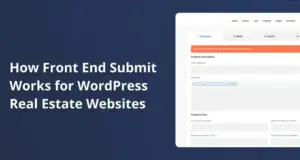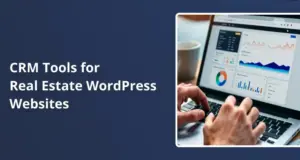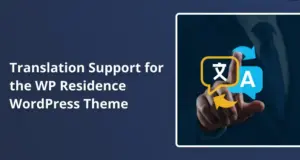Email marketing automation is when software sends emails to people without someone having to do it every time. Instead of sending emails by hand, the system sends the right messages at the right time. This is great for real estate businesses like home sales, office rentals, or property management. It helps agents easily talk to home buyers, sellers, renters, and investors. Plus, it saves money. For every $1 spent, businesses can make about $36. Email also turns 40% more people into clients than social media does.
What Is Email Marketing Automation?
This type of email marketing uses computers and software to help real estate agents talk to their leads and clients. It works by sending automatic emails when something happens. For example, when someone signs up on your website, they get a welcome email. Then, more helpful emails can follow over the next few weeks.
Instead of sending each message yourself, you set up a plan, and the system does the rest. The software works with your contact list or CRM. It uses things like the person’s interests or actions to send a message just for them. This helps ensure each person gets a message they care about. A real estate agent can keep in touch with hundreds of people this way.
Why Email Marketing Automation Is Valuable for Real Estate
Implementing email automation brings significant benefits for real estate professionals and brokerages:
1. Saves Time and Keeps You On Track: Once you set up your emails, they send themselves. Agents don’t have to remember to follow up. The email goes out on time, whether it’s a monthly newsletter, open house notice, or meeting reminder.
2. Better Results and Higher Returns: Email gives good results. If you spend $1, you can make $36 back. People who get emails are 40% more likely to become clients than social media users. Real estate emails also have a reasonable open rate—about 23%.
3. Send Special Messages to Different People: You can split your email list into groups. For example, you can send new buyers tips about getting a mortgage and finding a home, and investors can get market news. This makes emails feel more personal.
4. Turn Leads Into Clients Over Time: Buying or selling a home takes time. Automated emails keep leads interested while they think about their next move. For example, you can send tips to new buyers over a few weeks. Many sales happen only after the fifth email, so staying in touch is essential.
5. Keep Clients and Get Referrals: Even after the sale, emails can help you. Past clients can receive emails about holidays, home tips, or market news. This keeps your name in their minds, and they may return to you or tell their friends about you.
6. Track What Works and Improve: These tools show which emails people open, which links they click, and how many people ask for showings. You can use this information to improve future emails.
Email automation lets real estate agents save time, build trust, and simultaneously stay in touch with many people. It’s like having a helper that sends the right messages for you.
Ways Real Estate Agents Use Email Automation

There are many helpful ways to use email automation in real estate. Here are some examples:
1. Drip Campaigns: This is a set of emails that go out one after another over time. These emails teach and help people who may buy or sell a home.
You can make different drip emails for buyers and sellers. For example, a buyer drip might include:
- What is a mortgage?
- Tips for searching for a home
- What happens during closing
A seller drip could include:
- How to stage a home
- How to set the right price
- A moving checklist
These emails help people feel ready. They also make them trust you more. These types of campaigns can raise the chance of someone becoming a client by about 25%.
2. Open House and Event Emails: When you plan an open house or event, email automation can invite the right people. The email can include the date, time, location, and RSVP link. You can even send VIP invites to high-value clients. This helps more people come and makes things easier for the agent.
3. New Property Alerts: This is one of the most popular real estate email automation uses. If your website connects with listing data, people can sign up to get emails about new properties. For example, someone who wants office space can get an alert when one becomes available. This makes people feel like you’re working hard for them and keeps them checking your site.
4. Post-Sale Emails: The work doesn’t end after the deal. You can set up follow-up emails after the sale, like:
- A thank-you note
- A survey one month later
- A yearly home anniversary email
- Seasonal tips for home care
These emails show you care and help you stay connected. People who hear from you are more likely to return or recommend you.
5. Investor Newsletters and Market Reports: Some clients, like investors, want updates about the market. You can set up a monthly email that shares:
- Sales trends
- Rental rates
- Good investment spots
You can also have different newsletters for commercial and home markets. These emails show that you know your stuff and keep people interested in working with you.
Top Email Marketing Automation Tools for Real Estate
To start using email automation, you’ll need to choose a platform. Here are some tools that work well, especially for beginners:
- Mailchimp: This tool is popular and easy to use. It has a free plan and many templates. You can drag and drop to make emails. It has simple automation, too. It’s a good pick for small or new real estate teams. Why it’s good: You can test it for free. It’s great for sending welcome emails, property alerts, and updates.
- Constant Contact: This tool has been around for a long time. It offers excellent support and lots of ways to design your email. It also has event tools to help with open house invites. Why it’s good: You can track who replies to open house invites. It makes it easy to organize your list of contacts.
- ActiveCampaign: This tool is more advanced. It lets you build innovative email paths. For example, if someone clicks a link, they can get a different follow-up email. Why it’s good: It helps you send personal emails and works with many CRM systems. This is great for bigger teams who want strong follow-ups.
- HubSpot: HubSpot does a lot more than just emails. It’s a complete system that helps with emails, contacts, tasks, and deals. It also tracks what people do, like opening an email or visiting your site. Why it’s good: This is a great pick if you want a complete tool to manage clients, emails, and more. It has a free version, but you may need to pay for advanced features.
- Brevo (Sendinblue): This tool lets you send emails and text messages. It has a good free plan and allows you to add lots of contacts. You can also create workflows and send special messages to your list. Why it’s good: You can send emails and texts at the same time, which is helpful when you want to reach more people. It’s also great for small teams with big lists.
Tips for Choosing a Tool: Think about what you need now and what you might need later. If you don’t have a contact manager yet, HubSpot can provide one. If you want to keep costs low, try Mailchimp or Brevo first. Make sure the tool you choose has what you need, like:
- Grouping contacts
- Setting up email plans
- Templates to design your emails
- Stats to see what’s working
Many tools offer free trials. Try them out to see which feels easiest for you and your team.
Email marketing automation is an excellent way for real estate agents to stay connected, save time, and grow their business. It sends the right message to the right person at the right time. Whether helping a first-time buyer or keeping in touch with an old client, these smart emails build relationships. And that leads to more sales, better service, and a stronger brand.
Click here to read Part 2









